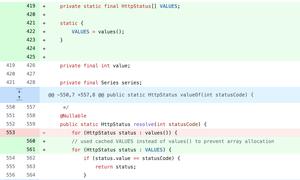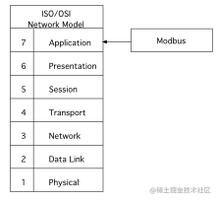生成唯一32位ID编码代码Java(GUID)

源码下载链接:http://pan.baidu.com/s/1jGCEWlC
扫扫关注“茶爸爸”微信公众号
坚持最初的执着,从不曾有半点懈怠,为优秀而努力,为证明自己而活。
/*
* RandomGUID
* @version 1.2.1 11/05/02
* @author Marc A. Mnich
*
* From www.JavaExchange.com, Open Software licensing
*
* 11/05/02 -- Performance enhancement from Mike Dubman.
* Moved InetAddr.getLocal to static block. Mike has measured
* a 10 fold improvement in run time.
* 01/29/02 -- Bug fix: Improper seeding of nonsecure Random object
* caused duplicate GUIDs to be produced. Random object
* is now only created once per JVM.
* 01/19/02 -- Modified random seeding and added new constructor
* to allow secure random feature.
* 01/14/02 -- Added random function seeding with JVM run time
*
*/
importjava.net.*;
importjava.util.*;
importjava.security.*;
/*
* In the multitude of java GUID generators, I found none that
* guaranteed randomness. GUIDs are guaranteed to be globally unique
* by using ethernet MACs, IP addresses, time elements, and sequential
* numbers. GUIDs are not expected to be random and most often are
* easy/possible to guess given a sample from a given generator.
* SQL Server, for example generates GUID that are unique but
* sequencial within a given instance.
*
* GUIDs can be used as security devices to hide things such as
* files within a filesystem where listings are unavailable (e.g. files
* that are served up from a Web server with indexing turned off).
* This may be desireable in cases where standard authentication is not
* appropriate. In this scenario, the RandomGUIDs are used as directories.
* Another example is the use of GUIDs for primary keys in a database
* where you want to ensure that the keys are secret. Random GUIDs can
* then be used in a URL to prevent hackers (or users) from accessing
* records by guessing or simply by incrementing sequential numbers.
*
* There are many other possiblities of using GUIDs in the realm of
* security and encryption where the element of randomness is important.
* This class was written for these purposes but can also be used as a
* general purpose GUID generator as well.
*
* RandomGUID generates truly random GUIDs by using the system's
* IP address (name/IP), system time in milliseconds (as an integer),
* and a very large random number joined together in a single String
* that is passed through an MD5 hash. The IP address and system time
* make the MD5 seed globally unique and the random number guarantees
* that the generated GUIDs will have no discernable pattern and
* cannot be guessed given any number of previously generated GUIDs.
* It is generally not possible to access the seed information (IP, time,
* random number) from the resulting GUIDs as the MD5 hash algorithm
* provides one way encryption.
*
* ----> Security of RandomGUID: <-----
* RandomGUID can be called one of two ways -- with the basic java Random
* number generator or a cryptographically span random generator
* (SecureRandom). The choice is offered because the secure random
* generator takes about 3.5 times longer to generate its random numbers
* and this performance hit may not be worth the added security
* especially considering the basic generator is seeded with a
* cryptographically span random seed.
*
* Seeding the basic generator in this way effectively decouples
* the random numbers from the time component making it virtually impossible
* to predict the random number component even if one had absolute knowledge
* of the System time. Thanks to Ashutosh Narhari for the suggestion
* of using the static method to prime the basic random generator.
*
* Using the secure random option, this class compies with the statistical
* random number generator tests specified in FIPS 140-2, Security
* Requirements for Cryptographic Modules, secition 4.9.1.
*
* I converted all the pieces of the seed to a String before handing
* it over to the MD5 hash so that you could print it out to make
* sure it contains the data you expect to see and to give a nice
* warm fuzzy. If you need better performance, you may want to stick
* to byte[] arrays.
*
* I believe that it is important that the algorithm for
* generating random GUIDs be open for inspection and modification.
* This class is free for all uses.
*
*
* - Marc
*/
publicclassRandomGUIDextendsObject
{
public String valueBeforeMD5 ="";
public String valueAfterMD5 ="";
private
static Random myRand;
private
static SecureRandom mySecureRand;
private
static String s_id;
/*
* Static block to take care of one time secureRandom seed.
* It takes a few seconds to initialize SecureRandom. You might
* want to consider removing this static block or replacing
* it with a "time since first loaded" seed to reduce this time.
* This block will run only once per JVM instance.
*/
static {
mySecureRand =
new SecureRandom();
long secureInitializer = mySecureRand.nextLong();
myRand =
new Random(secureInitializer);
try {
s_id = InetAddress.getLocalHost().toString();
}
catch (UnknownHostException e) {
e.printStackTrace();
}
}
/*
* Default constructor. With no specification of security option,
* this constructor defaults to lower security, high performance.
*/
public RandomGUID() {
getRandomGUID(false);
}
/*
* Constructor with security option. Setting secure true
* enables each random number generated to be cryptographically
* span. Secure false defaults to the standard Random function seeded
* with a single cryptographically span random number.
*/
public RandomGUID(booleansecure) {
getRandomGUID(secure);
}
/*
* Method to generate the random GUID
*/
private
void getRandomGUID(booleansecure) {
MessageDigest md5 =
null;
StringBuffer sbValueBeforeMD5 =
new StringBuffer();
try {
md5 = MessageDigest.getInstance("MD5");
}
catch (NoSuchAlgorithmException e) {
System.out.println("Error: "+ e);
}
try {
long time = System.currentTimeMillis();
long rand =
0;
if (secure) {
rand = mySecureRand.nextLong();
}
else {
rand = myRand.nextLong();
}
// This StringBuffer can be a long as you need; the MD5
// hash will always return 128 bits. You can change
// the seed to include anything you want here.
// You could even stream a file through the MD5 making
// the odds of guessing it at least as great as that
// of guessing the contents of the file!
sbValueBeforeMD5.append(s_id);
sbValueBeforeMD5.append(":");
sbValueBeforeMD5.append(Long.toString(time));
sbValueBeforeMD5.append(":");
sbValueBeforeMD5.append(Long.toString(rand));
valueBeforeMD5 = sbValueBeforeMD5.toString();
md5.update(valueBeforeMD5.getBytes());
byte[] array = md5.digest();
StringBuffer sb =
new StringBuffer();
for (intj =0;
j < array.length; ++j) {
int b = array[j] &
0xFF;
if (b <
0x10) sb.append('0');
sb.append(Integer.toHexString(b));
}
valueAfterMD5 = sb.toString();
}
catch (Exception e) {
System.out.println("Error:"+ e);
}
}
/*
* Convert to the standard format for GUID
* (Useful for SQL Server UniqueIdentifiers, etc.)
* Example: C2FEEEAC-CFCD-11D1-8B05-00600806D9B6
*/
public String toString() {
String raw = valueAfterMD5.toUpperCase();
StringBuffer sb =
new StringBuffer();
sb.append(raw.substring(0,8));
sb.append("-");
sb.append(raw.substring(8,12));
sb.append("-");
sb.append(raw.substring(12,16));
sb.append("-");
sb.append(raw.substring(16,20));
sb.append("-");
sb.append(raw.substring(20));
return sb.toString();
}
/*
* Demonstraton and self test of class
*/
public
static
void main(String args[]) {
for (inti=0;
i<100; i++) {
RandomGUID myGUID =
new RandomGUID();
System.out.println("Seeding String="+ myGUID.valueBeforeMD5);
System.out.println("rawGUID="+ myGUID.valueAfterMD5);
System.out.println("RandomGUID="+ myGUID.toString());
}
}
}
-----------------------------------------------------------------------------
importjava.security.*;
public
class RandomGUIDdemo {
// Generate 20 of 'em!
public
static void
main(String[] args) {
for(inti=1;
i<=20; i++) {
RandomGUID myguid =
new RandomGUID(false);
System.out.println(i +
" " + myguid.toString());
}
}
}
以上是 生成唯一32位ID编码代码Java(GUID) 的全部内容, 来源链接: utcz.com/z/390049.html









